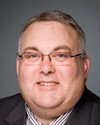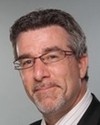Actually, I got to Yellowknife when I was at Queen's Park, before I came here. It's a very beautiful city and it would be a great place for this committee to go because we now know that if my motion was adopted, this could be one of the places we go to. I want the members of the government to know that it looks like a pretty secure place. I know they were very frightened of going out on the road and having Canadians say impolite things on their placards outside of a meeting. And remember, this is the government that considered the input of Canadians to be a gong show and a circus. I just wanted to mention this, specifically. That's why C-15 provides a great opportunity for me to show direct comparisons between what my motion is requesting this committee do, and exactly what another committee did in the same situation not more than two months ago.
I'm talking about the witnesses. Who did they have, relative to C-15, so that we can be sure the people I've listed in my motion are important and relative to our bill, C-23, in the same way these witnesses were? Right off the bat, as much as it makes no sense for us to be dealing with this without the input of the Chief Electoral Officer, the very first person that the committee.... By the way, the proper name, Chair, is the Standing Committee on Aboriginal Affairs and Northern Development, and I apologize to that committee for not having it at the tip of my fingers.
The first witness for the government was the Hon. Bob McLeod, who is the premier of the Northwest Territories. He brought legal counsel, James Fulford, and Shaleen Woodward was the assistant deputy minister. There were representatives there: the Hon. Ethel Blondin-Andrew, former member, chairperson; Frank Andrew, the grand chief; and Daryn Leas was there as his legal counsel. You can see the kinds of people they invited, Chair, are directly related to Bill C-15, and that's why my motion—




